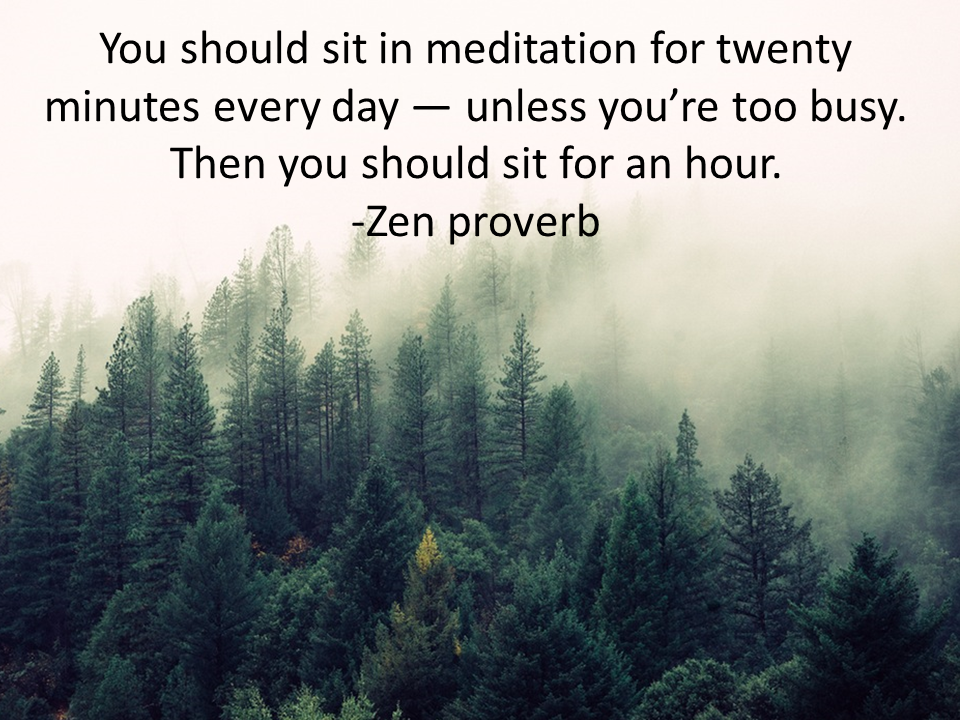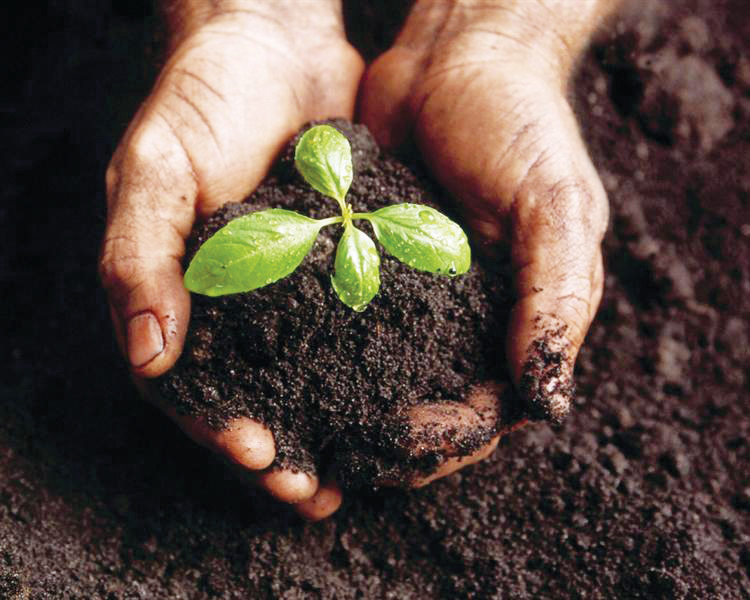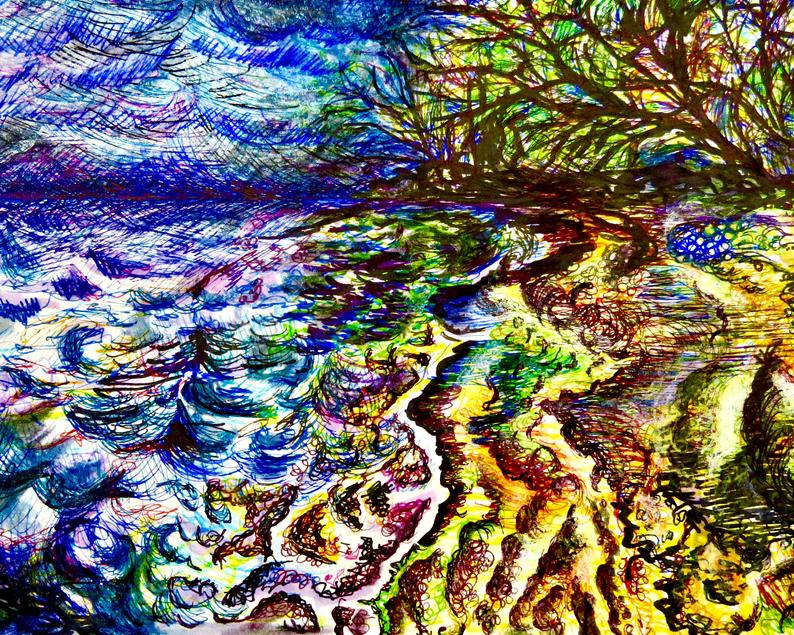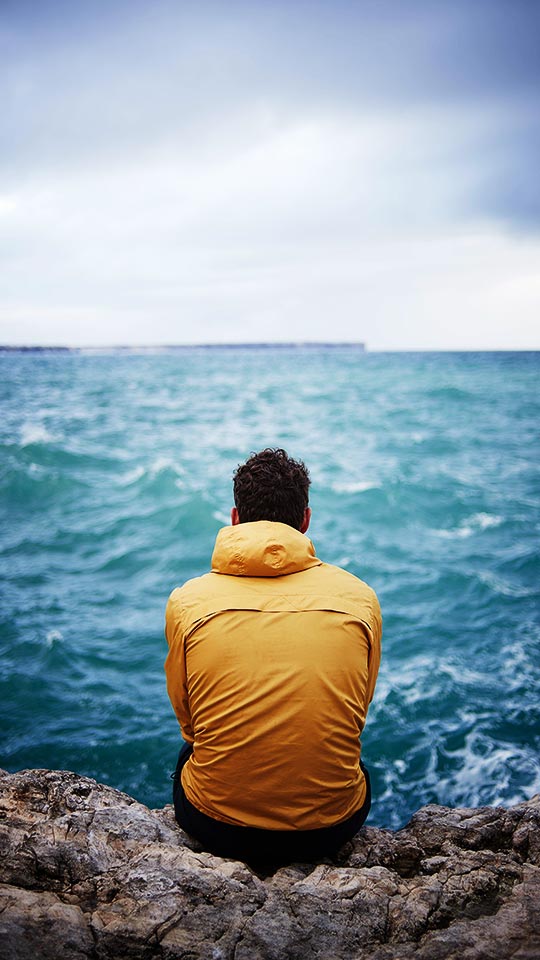June 2, 2019

Every time I heard or read that quote, I felt like a failure. I totally got it. I just couldn’t seem to make space in my life that was full to the brim with children, spouse, home life and work life to sit for twenty minutes every day to meditate without giving up sleep, which was nonnegotiable. (“Sleep is the best meditation,” according to the Dalai Lama.)
Then I learned about “moving meditation” and everything changed. I could take some of the more mundane activities in my life and transform them into a time for meditative reflection. Win-win! This week’s Living Arts Weekly blog post offers some creative ideas (through the lens of the Living Arts) in case you also find it hard to carve out time to sit in contemplation/meditation each day.
Blessings on your week,

Mary O’Connell, Your Living Arts Weekly blog editor
Practical Activity

(from Living Arts Through the Seasons – Spring edition; archived seasons are available at a reduced price!)
A Compost Meditation
Several years ago, I (Mary) attended a wonderful composting workshop with Bruno Fallador. Bruno discussed our current trend of “sustainable agriculture” and our need — as citizens, gardeners, and farmers — to go beyond “sustainable”. What the earth needs now is “renewal.” Sustainable just isn’t enough. We need to heal the earth.
Composting is one way we can begin to heal the earth. An old Chinese proverb says: A bad farmer grows weeds, a good farmer grows crops, and a great farmer grows soil. (On any given day, I am all three kinds of gardener!)
As I began to work with compost at Paradise Farm, I learned that composting can be done as a meditation. And in so doing, the benefits to us extend beyond our garden or back yard — they help us in our family life, in our classrooms, and in other areas of our lives. This is a technique I learned from Citizen Farmers: A Biodynamic Way to Grow Healthy Food, Build Thriving Communities, and Give Back to the Earth.
When building a compost pile, I turn the rhythm of shoveling into an internal meditation that allows me to compost negative thoughts into positive ones. Composting for the soil is the process of breaking down organic materials, and composting for the soul is the process of breaking down personal struggles. In both cases, you bring your stinky old refuse, add the good stuff, and give it time to “cook.”
- Identify the location for your new compost pile.
- Loosen up the soil with a digging fork and maybe add a sprinkling of lime, ash and blood meal. I also like to add in Pfeiffer Biodynamic Compost Starter as I build my pile. The little packet that comes with it gives specific, foolproof guidelines for the creation of your pile.
- As you build the pile, with layers of (1) brown crunchy dead stuff (dried leaves or straw); (2) manure, green garden refuse or food waste; and (3) a light sprinkle of water between layers, let your mind go and tune into the rhythm of shoveling back and forth. As thoughts come up, give them over to the compost pile. Visualize yourself placing your anger, your sorrow, your grief or your stress onto the pile as you build up the layers.
- Now step away and let it cook.
This is different from meditation in which you sit in silence. It is an active meditation that results in a radiant pile of decomposition! Maybe that’s why I like it so much.
Just as composting turns stinky raw manure or rotten vegetables into rich-sweet-smelling, fertile soil, the practice of a composting meditation can help us to dispel the mental clutter that holds us back. Compost renews the earth, and the composting meditation renews your own soul.
Not a gardener? One could do this same kind of active meditation while washing the dishes or sweeping the floor.
Nurturing Care

Try a simple relaxation exercise.
Lie down. Put your hands on your stomach and feel the rise and fall of your breathing.
On the in-breath, think of gathering in Love.
On the out-breath, think of giving Love to the world.
(Click here for a free download from Meditation by Friedrich Rittelmeyer, the first Christian Community priest, explaining one way to use the words Love and Peace in a twice daily meditation.)
Creative Exploration
Meditative Drawing

A friend of mine, Denise Cawley, created the above image. She writes. “This is a little tiny beach I walk to when I have a lot to think about and #PrayTheLake. I love how the water meets land here and it is that space of neither land or sea where I find God.
I base my art on photos I take as part of my spiritual practice. This one was done in markers and paint. I use paint markers, permanent markers, watercolor paints and oil based paints to create these images. I use my art making as a form of prayer and meditation.”
You don’t have to be a great artist to enjoy meditative drawing. Begin by doodling on some scratch paper and see what comes. Click here for some free patterns to get started!
Social Awareness
Meditation isn’t selfish

“Rudolf Steiner once said that if this hurried, external life of our continues for a few more decades, the children will be born already trembling. Such words can most forcibly impress upon our souls the seriousness of the mission which we have to ourselves and to our time.” – Friedrich Rittelmeyer in Meditation, 1932.
“If we can make just 1% of the population meditative, this world will be a different place.” – Sadhguru
“Where there is peace and meditation, there is neither anxiety nor doubt.” – St. Francis de Sales
“Meditation brings wisdom; lack of meditation leaves ignorance. Know well what leads you forward and what holds you back, and choose the path that leads to wisdom.” – Buddha
What a useful post. I inspired to practice meditation and very day to bring wisdom to my life. Thank you!
Thanks for the feedback, Arely! Best of luck!